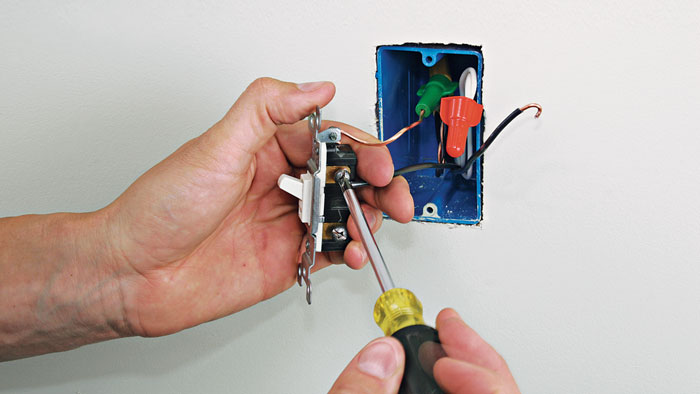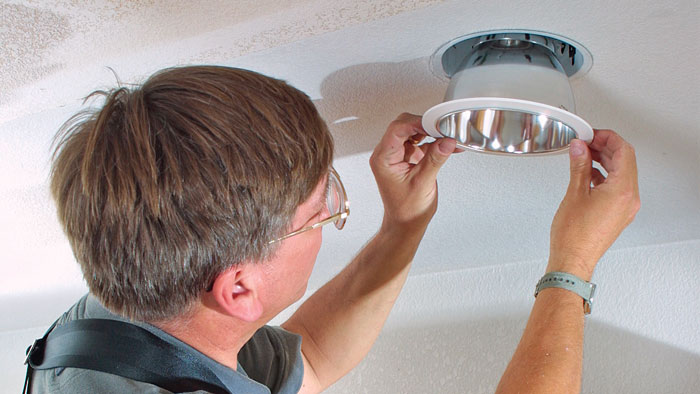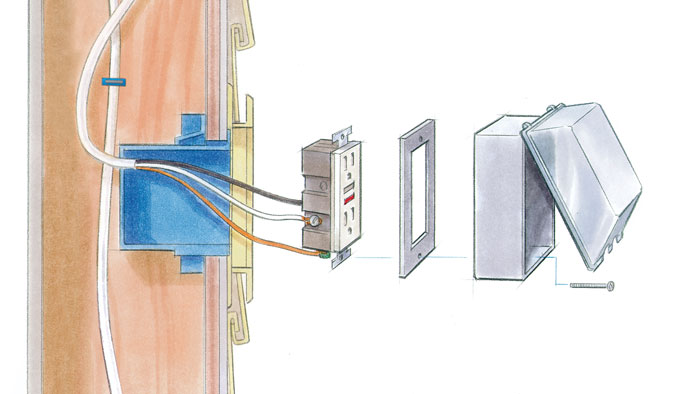
Fine Homebuilding Project Guides
Wiring
Trusted, code-compliant guidance from the pros for working safely on any wiring project
For many people, wiring is one of the most intimidating projects around the home, and they opt to hire an electrician to do the work. Although it is essential to treat electricity with the utmost respect, there is no reason why you can't tackle any number of wiring repair and installation tasks—as long as you have a basic knowledge of how electricity works and follow certain safety rules to the letter. With advice from the master electricians who have contributed to this comprehensive guide, you'll be able to approach any wiring project with confidence, whether it's as straightforward as replacing a faulty switch or as complex as planning an electrical remodel.
Choose a Chapter
Search Guide-
Working with Electricity

Before tackling any wiring project, it's important to have a clear understanding of how electricity works. This introductory chapter provides an overview of household electricity, including information on service panels and other major components of the electrical system, as well as an explanation of the sometimes-confusing topic of grounding. Safety is priority number one when it comes to any wiring project, and we'll outline everything you need to know to work safely. The chapter concludes with a section on troubleshooting and wiring upgrades.
-
Tools and Materials

Most common wiring projects can be managed with just a few basic tools and supplies. You'll need a variety of pliers, drivers, stripping tools, and, depending on the job, maybe a couple of specialty electrical tools. Most important for your safety, an electrical tester (there's more than one type) will allow you to check whether a circuit or device is energized. In terms of supplies and materials, electrical tape is a must, as are wire nuts, cable clamps, and staples. This chapter outlines everything you need, and also gives you the lowdown on the various types of electrical boxes, and introduces you to the world of cable, conduit, and wire.
-
Receptacles and Switches
 Replacing a receptacle or a switch is one of the most common wiring projects. But no matter how straightforward the job or how confident you are with your wiring skills, you should always shut off the power before you do any electrical work, and check with a voltage tester to make sure the power is off. In this chapter we'll walk you through the steps to install a standard duplex receptacle and also show you how to wire GFCI and AFCI receptacles. The final part of the chapter focuses on switches, with guidelines for wiring single-pole, three-way, and four-way switches, as well as dimmers and wireless switches.
Replacing a receptacle or a switch is one of the most common wiring projects. But no matter how straightforward the job or how confident you are with your wiring skills, you should always shut off the power before you do any electrical work, and check with a voltage tester to make sure the power is off. In this chapter we'll walk you through the steps to install a standard duplex receptacle and also show you how to wire GFCI and AFCI receptacles. The final part of the chapter focuses on switches, with guidelines for wiring single-pole, three-way, and four-way switches, as well as dimmers and wireless switches. -
Lights and Fans

We've talked a lot so far about the down-and-dirty side of wiring, with our focus on receptacles and switches, wires and cables. But there's also a more aesthetically pleasing aspect to electricity: namely, lighting design. This chapter looks at the key role that illumination plays in the design of a home, whether with newer LED lighting or more traditional light fixtures. Of course, we'll also explain the nuts and bolts of installing and wiring lights, including sconces, recessed cans, and undercabinet lighting. The chapter ends with information on installing ceiling fans, bathroom fans, and range hoods.
-
Rough-In

Rough-in wiring is the work that goes on behind the scenes, so to speak. It involves setting electrical outlet boxes, running cable, and making connections in the boxes. (Finish wiring, by contrast, is the lighter-duty work of connecting wires to devices and fixtures, covered in earlier chapters of the guide.) Rough-in wiring is relatively straightforward when the framing is exposed in new work, but it becomes more complicated when you have to cut through finished surfaces in remodel work. This chapter covers both approaches, and also includes a crash course on working with electrical conduit.
-
Outdoor Wiring

Outdoor wiring involves adding outdoor receptacles and lights, as well running power to an outbuilding. The tools you'll need are pretty much the same as the ones you use to wire a house interior (with the exception of digging tools); in terms of materials, exterior outlets and circuits are required to have GFCI protection. This chapter explains how to tap into an existing outlet when adding an outdoor receptacle, how to install low-voltage path lights and motion-sensor lights, and how to work with PVC conduit.
-
Panels and Subpanels

No one should be working inside a panel or subpanel unless they have considerable electrical experience, or better yet are licensed as an electrician. Either way, we recommend that you work inside a panel only if you are extremely careful and have a thorough understanding of the process. For everyone else, this chapter is for informational purposes only; it will provide a way to gain a better understanding of the electrical system in your home.
- Home Group
- Antique Trader
- Arts & Crafts Homes
- Bank Note Reporter
- Cabin Life
- Cuisine at Home
- Fine Gardening
- Fine Woodworking
- Green Building Advisor
- Garden Gate
- Horticulture
- Keep Craft Alive
- Log Home Living
- Military Trader/Vehicles
- Numismatic News
- Numismaster
- Old Cars Weekly
- Old House Journal
- Period Homes
- Popular Woodworking
- Script
- ShopNotes
- Sports Collectors Digest
- Threads
- Timber Home Living
- Traditional Building
- Woodsmith
- World Coin News
- Writer's Digest




